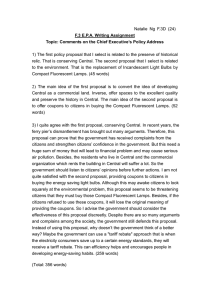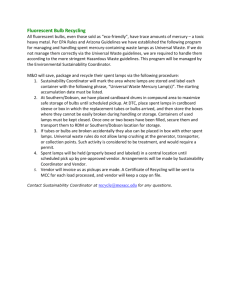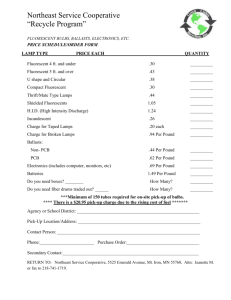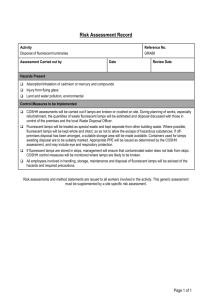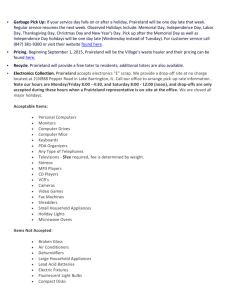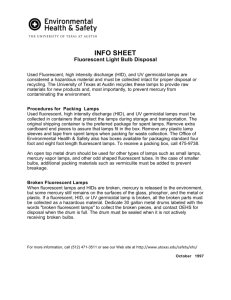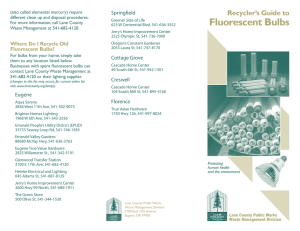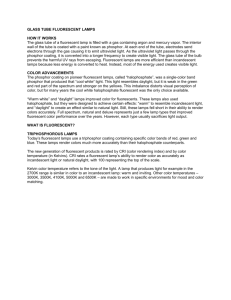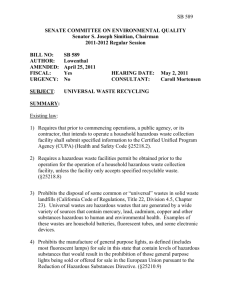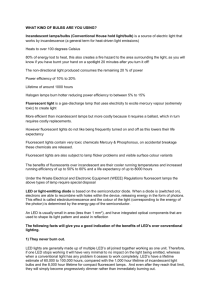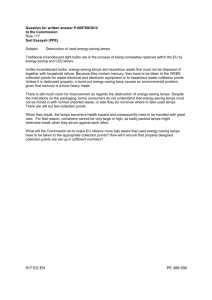Safe Operating Procedures for Changing Fluorescent Bulbs
advertisement
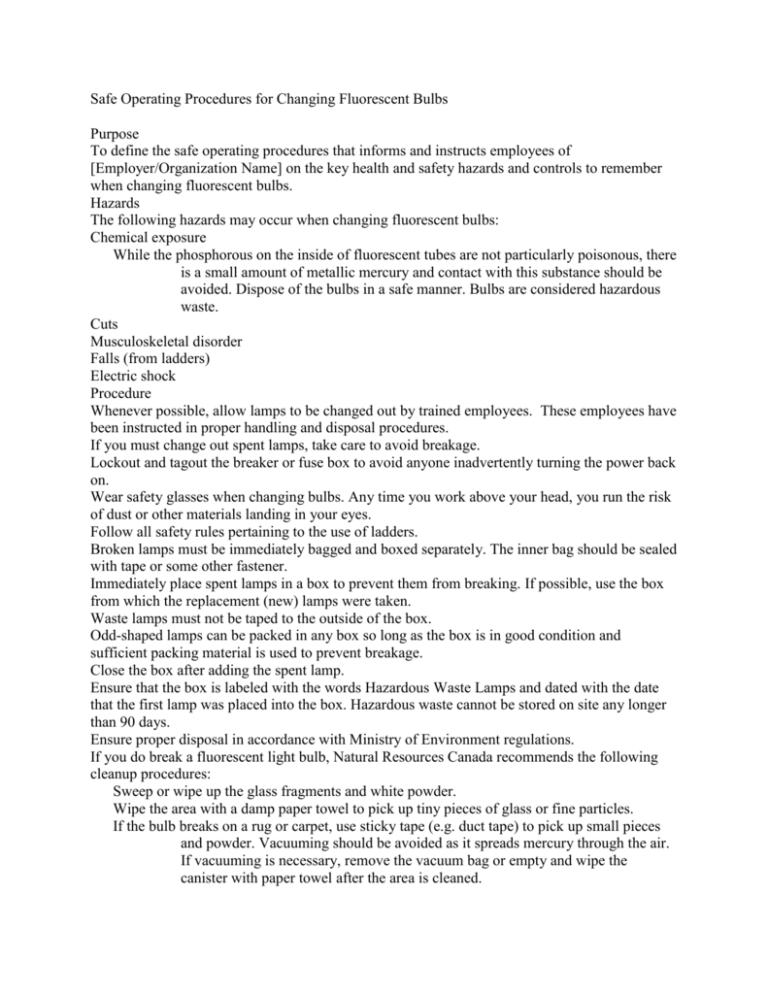
Safe Operating Procedures for Changing Fluorescent Bulbs Purpose To define the safe operating procedures that informs and instructs employees of [Employer/Organization Name] on the key health and safety hazards and controls to remember when changing fluorescent bulbs. Hazards The following hazards may occur when changing fluorescent bulbs: Chemical exposure While the phosphorous on the inside of fluorescent tubes are not particularly poisonous, there is a small amount of metallic mercury and contact with this substance should be avoided. Dispose of the bulbs in a safe manner. Bulbs are considered hazardous waste. Cuts Musculoskeletal disorder Falls (from ladders) Electric shock Procedure Whenever possible, allow lamps to be changed out by trained employees. These employees have been instructed in proper handling and disposal procedures. If you must change out spent lamps, take care to avoid breakage. Lockout and tagout the breaker or fuse box to avoid anyone inadvertently turning the power back on. Wear safety glasses when changing bulbs. Any time you work above your head, you run the risk of dust or other materials landing in your eyes. Follow all safety rules pertaining to the use of ladders. Broken lamps must be immediately bagged and boxed separately. The inner bag should be sealed with tape or some other fastener. Immediately place spent lamps in a box to prevent them from breaking. If possible, use the box from which the replacement (new) lamps were taken. Waste lamps must not be taped to the outside of the box. Odd-shaped lamps can be packed in any box so long as the box is in good condition and sufficient packing material is used to prevent breakage. Close the box after adding the spent lamp. Ensure that the box is labeled with the words Hazardous Waste Lamps and dated with the date that the first lamp was placed into the box. Hazardous waste cannot be stored on site any longer than 90 days. Ensure proper disposal in accordance with Ministry of Environment regulations. If you do break a fluorescent light bulb, Natural Resources Canada recommends the following cleanup procedures: Sweep or wipe up the glass fragments and white powder. Wipe the area with a damp paper towel to pick up tiny pieces of glass or fine particles. If the bulb breaks on a rug or carpet, use sticky tape (e.g. duct tape) to pick up small pieces and powder. Vacuuming should be avoided as it spreads mercury through the air. If vacuuming is necessary, remove the vacuum bag or empty and wipe the canister with paper towel after the area is cleaned. Double bag the broken pieces, paper towel and vacuum bag and dispose of it in an outdoor trash can for regular garbage pickup. Note: fluorescent bulbs should never be placed in an incinerator. Legislative Reference Natural Resources Canada Ministry of Environment Regulation 347 Municipal Bylaws Additional Resources SOP for Ladders Document Management Effective Date: Revision Date:
